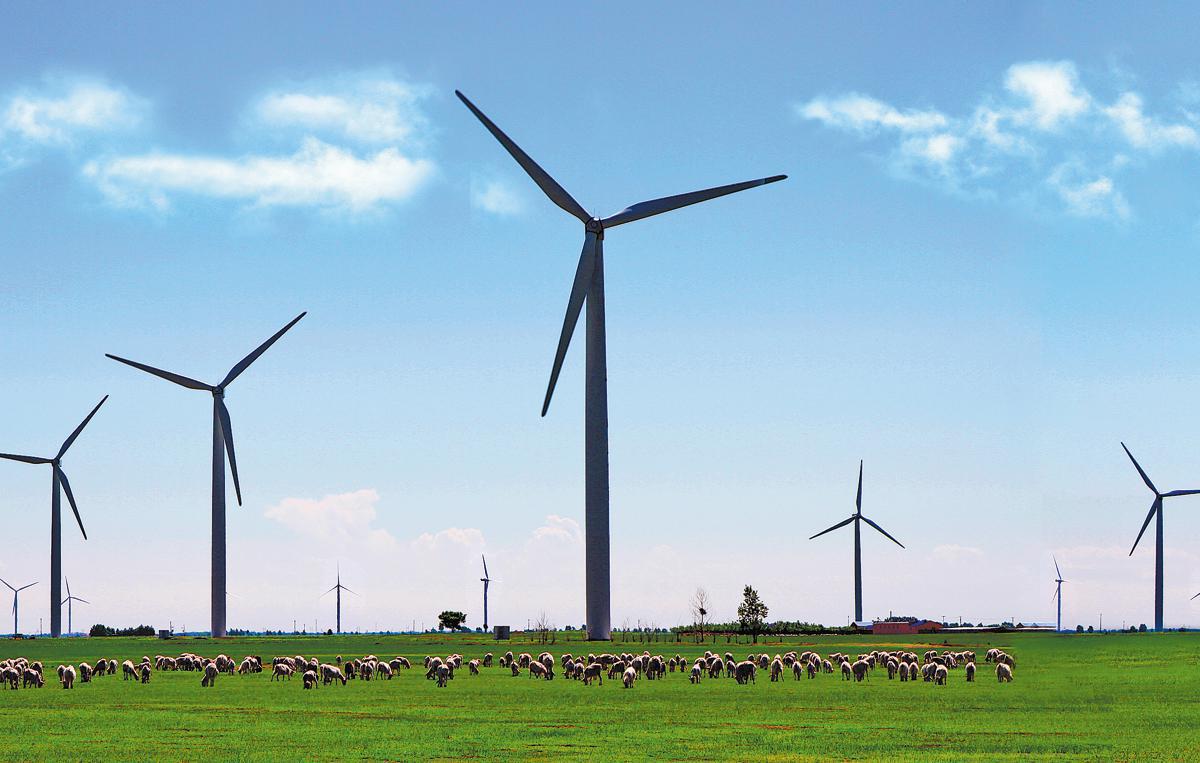
A grassland wind farm in the Taobei district of Baicheng, Jilin province, in July. LI XIAOMING/FOR CHINA DAILY
China's investment in its energy transition is expected to surpass $1 trillion by 2030, with a focus on enhancing energy efficiency and accelerating electrification, according to a think tank.
In 2024, investment in China's energy sector is forecast to reach $850 billion, accounting for nearly 30 percent of the global total, and standing at 1.5 to 2 times the level of the United States and the European Union, according to the China Energy Outlook 2060 report released by the Sinopec Economics and Development Research Institute, a think tank that is part of China Petroleum and Chemical Corp.
The report highlights a shift in China's energy investment structure compared to 2019, with spending on fossil fuels declining while investments in renewable energy generation and efficiency improvements surging by about 70 percent.
However, investment in critical areas like grids and energy storage has lagged, increasing by less than 10 percent during the same period. This is in stark contrast to that of the European Union, where grid and storage investments slightly outpaced renewable energy spending, it said.
While China has doubled the share of renewable energy in its energy investment mix — spending more than 40 percent of its energy transition funds on renewables, or roughly twice the amount allocated to fossil fuels — grid and storage development remains a weak link, said Luo Daqing, vice-president of the institute.
He cautioned that failing to align grid investment with the rapid growth of renewable energy could undermine the broader energy transition.
Zhou Libo, deputy secretary-general of the China Electricity Council's electric transportation and energy storage branch, said investment is set to grow in integrated energy stations, photovoltaic-storage-charging hubs and supercharging stations, alongside upgrades to outdated infrastructure and adoption of advanced technologies such as automated and vehicle-to-grid interactive charging.
China remains the world's largest energy transition investor, contributing $676 billion in 2023, or 38 percent of the global total, significantly contributing to global green transition, according to the National Energy Administration.
BloombergNEF's Energy Transition Investment Trends 2024 report echoes this view, identifying China as a global leader in the green energy shift.
The report notes that China's grid investments in 2023 ranked third among energy transition sectors, totaling $310 billion. Grid development is a critical bottleneck in China's energy transition, it said
In 2023, global energy transition investments hit a record $1.77 trillion, up 17 percent year-on-year, despite challenges such as geopolitical conflicts, high inflation and rising interest rates. Key sectors driving the transition — including renewable energy, storage, nuclear energy, hydrogen, electrification, and grids — showed remarkable resilience in the face of external pressures, it said.
China's leadership in energy transition spending has been particularly evident in electrified transportation, renewable energy and grid development. Electrified transport was the largest single sector, with spending rising 36 percent year-on-year to $634 billion, it said.
Domestic grid companies are already stepping up investment in the construction of ultra-high voltage power transmission projects, strengthening the connection between county-level grids and the main grid and upgrading grid digitalization and intelligence.
State Grid Corp of China said earlier this year that its annual grid investment surpassed 600 billion yuan ($84 billion) for the first time in 2024.
Ultra-high voltage transmission lines refer to power transmission cables operating with greater than 800 kilovolts of direct current, or 1,000 kV of alternating current. Compared with traditional transmission lines, ultra-high voltage lines not only increase transmission capacity and extend transmission distances, but also reduce transmission losses.
Source: By Zheng Xin, chinadaily.com. Dec 25, 2024 [https://www.chinadaily.com.cn/a/202412/25/WS676b619ea310f1265a1d4c15.html]

